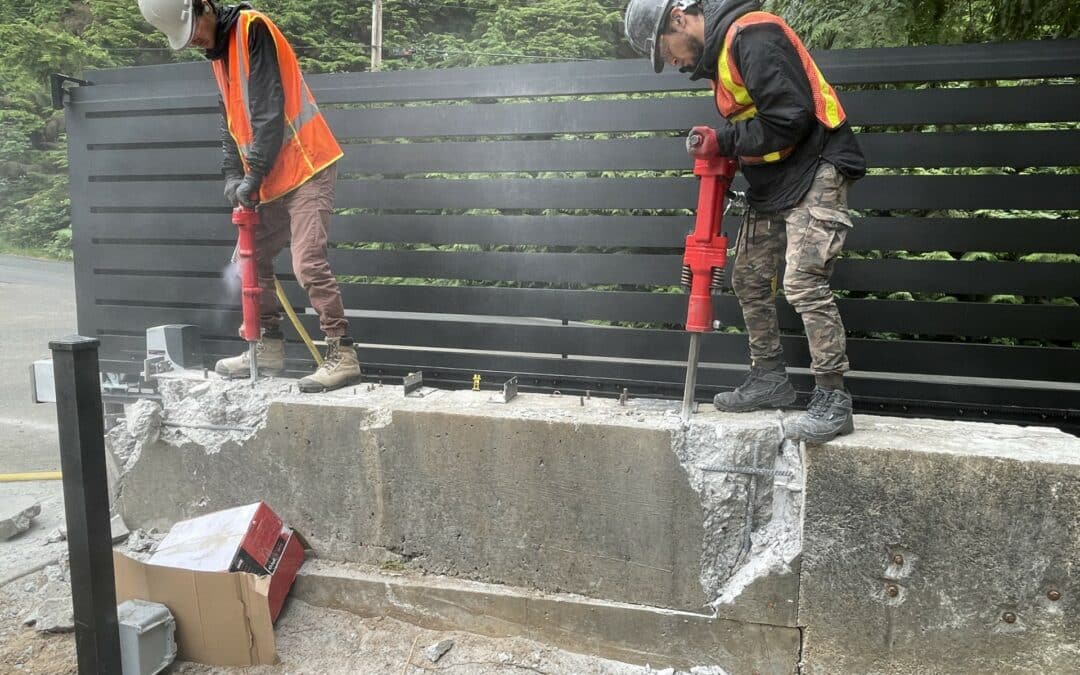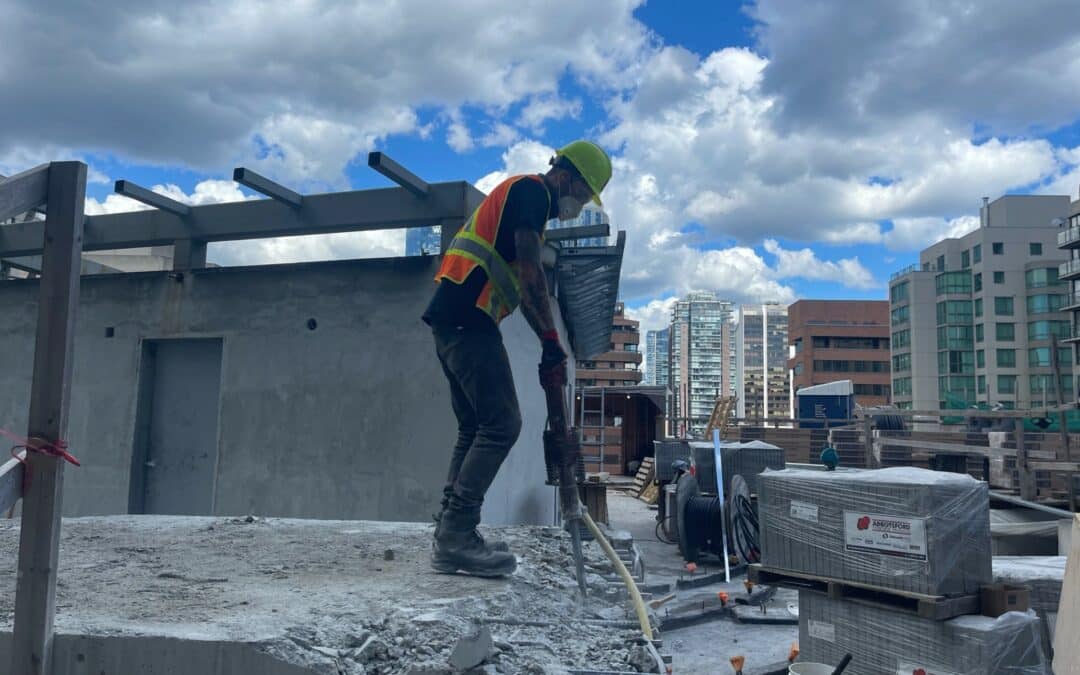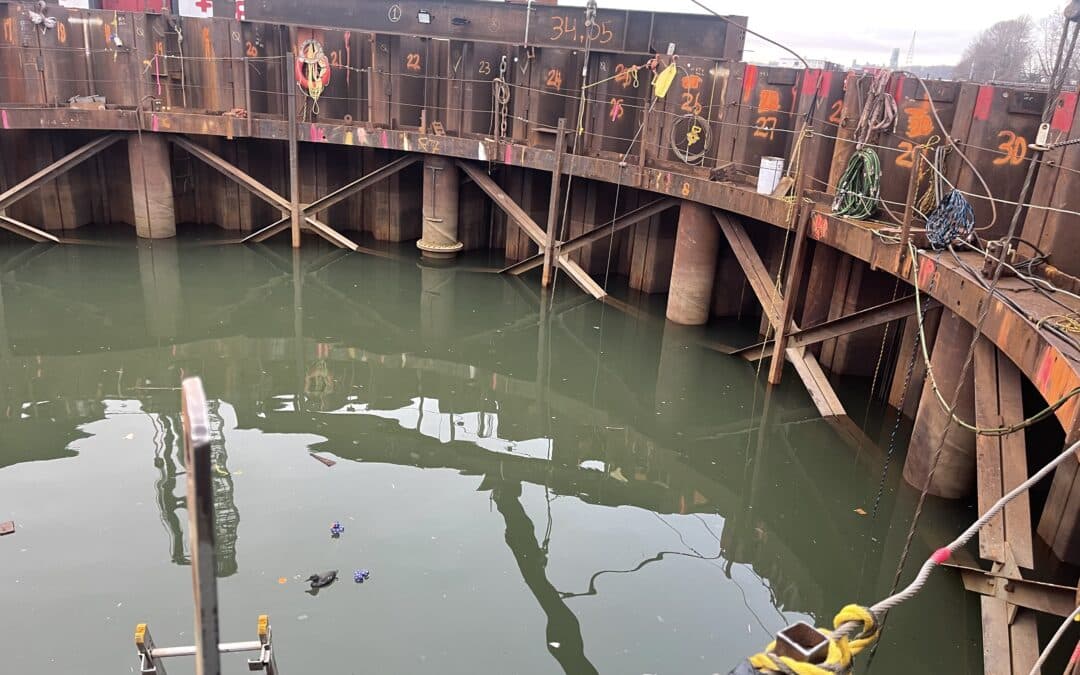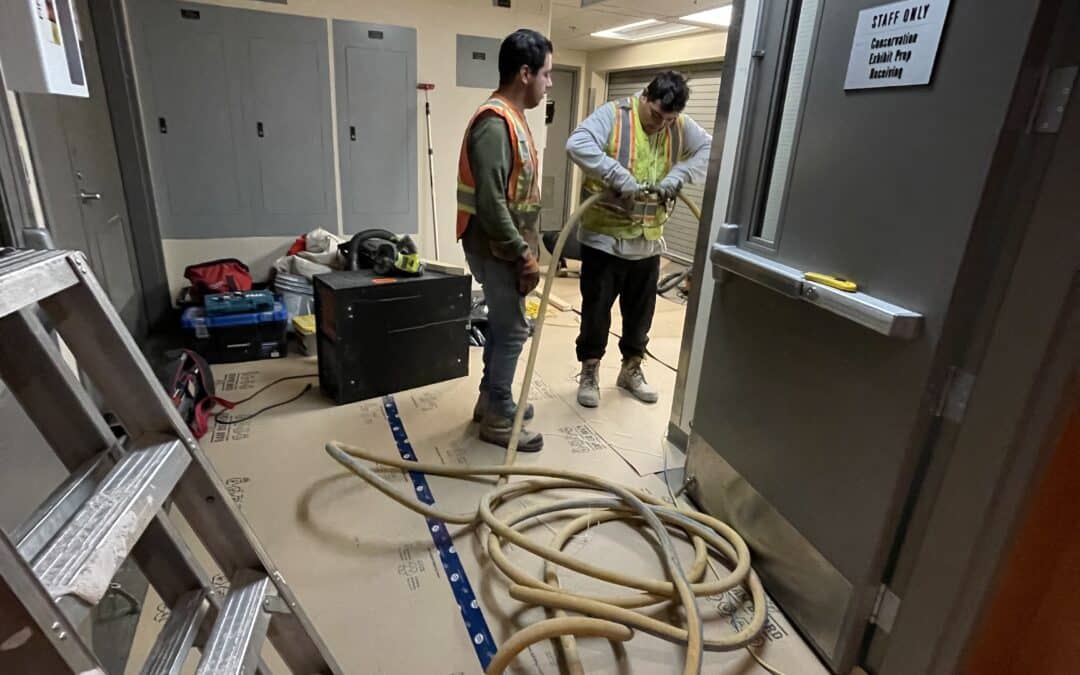Welcome to the world of rock-breaking experts, where we delve into the intriguing stories hidden within the very fabric of the Earth. Today, we turn our attention to one of nature’s most captivating works of art – that we get to see almost every single day on a job involving bedrock breaking: granite.
As we explore the lines and patterns etched into this majestic rock, prepare to embark on a journey through time, unveiling the geological secrets that lie beneath the surface.

Formation – A Symphony of Crystalline Beauty
At the heart of every granite lies a mesmerizing tale of formation. Just like a master painter meticulously crafts a canvas, granite comes to life through the slow cooling and solidification of magma deep within the Earth’s crust. Within its crystalline structure, enchanting lines known as “veins” gracefully dance, telling a story of intense pressure and temperatures that shaped this rock.
The Geological Memoirs
As rock-breaking experts, we pride ourselves not only with proper rock demos, but also on understanding our working material and deciphering the intricate narratives hidden within granite’s very foundation. The lines and patterns found within its sturdy embrace unveil clues about ancient geological events that unfolded over millions of years! By closely examining these patterns, we gain insights into the movement of tectonic plates, the intrusion of other rock types, and the passage of mineral-rich fluids – all pivotal elements in the Earth’s geological history.
Echoes of an Ancient Environment
As we study the lines etched into granite, we uncover whispers of the environmental conditions that prevailed during its formation. Subtle variations in color and texture provide a window into the past, allowing us to discern fluctuations in temperature, pressure, and the presence of different elements and minerals. Through these telltale signs, we piece together the puzzle of the ancient Earth’s climate and ecosystem.
The presence of color variations provides valuable insights into its formation and composition. These color differences arise from the diverse mineralogy and geological processes that have shaped the rock over time. Let’s explore some common color variations in granite and their significance.
White Veins: The occurrence of white veins in granite is often a result of mineral intrusions during its formation. These veins are formed when minerals such as quartz or feldspar infiltrate the rock, creating a stark contrast against the surrounding matrix. The presence of white veins suggests the introduction of additional minerals, possibly due to hydrothermal activity or the intrusion of fluids rich in silica. These veins can be seen as vibrant veins cutting through the rock, adding a touch of elegance to the overall composition.
Pink Coloring: The charming pink hues that grace certain granites can be attributed to the presence of minerals such as orthoclase feldspar or pink-hued micas like muscovite. These minerals give the rock its characteristic warm and inviting tones. The pink coloring in granite signifies a higher concentration of specific minerals within the rock, likely influenced by the geological conditions during its formation. It may suggest an abundance of potassium-rich feldspar or the presence of iron oxide impurities that lend a rosy tint.
Grey and Black Coloring: Granite with predominant grey or black coloring often owes its dark hues to the presence of minerals like biotite or hornblende, which exhibit dark coloration. The presence of these minerals indicates a higher content of mafic or iron-rich minerals within the rock. The grey and black shades in granite can also signify a higher concentration of quartz, which often appears as a lighter grey component. The darker coloring may result from slower cooling and solidification of the magma, allowing for the crystallization of these mineral species.
Other Color Variations: Granite’s color palette extends beyond the aforementioned examples, with variations ranging from golden browns to deep greens. These color variations stem from different mineral compositions and environmental influences during formation. For instance, the presence of green hues in granite can be attributed to the presence of minerals like chlorite or epidote. Golden brown shades can result from the interplay of minerals such as iron oxide or sericite. Each color variation in granite carries its own geological story, reflecting the unique conditions that shaped the rock.
Understanding the color differences in granite allows us to unravel the intricate tapestry of its formation and composition. By examining the mineralogy and geological processes involved, we can interpret the environmental conditions, the intrusion of minerals, and the relative timing of events that shaped the rock. Thus, the diverse colors found in granite serve as a visual testament to the dynamic processes that have shaped our planet over millions of years.
Metamorphic Revelations
In some instances, granite experiences metamorphism, a transformative process driven by immense heat and pressure. This metamorphic journey leaves its own distinct mark, adorning the rock with new lines and patterns. These unique features offer a glimpse into the geological forces at play, such as mountain-building events and regional-scale tectonic processes, allowing us to unravel the secrets of the Earth’s tumultuous past.

Reading the Earth’s Ancient Diary
As rock-breaking experts, our passion lies in unraveling the hidden stories within the magnificent granite formations. Through meticulous examination and analysis, we decode the lines and patterns etched into this remarkable rock, shedding light on its formation, geological history, ancient environment, and metamorphic events. The granite becomes a tangible record of the Earth’s journey, a testament to the awe-inspiring forces that shape our planet.
So, next time you encounter granite, take a moment to appreciate the captivating lines that adorn its surface. Remember that within those intricate patterns lies a treasure trove of geological tales waiting to be discovered, and the rock-breaking experts are here to guide you through the marvelous story that granite has to tell.








0 Comments